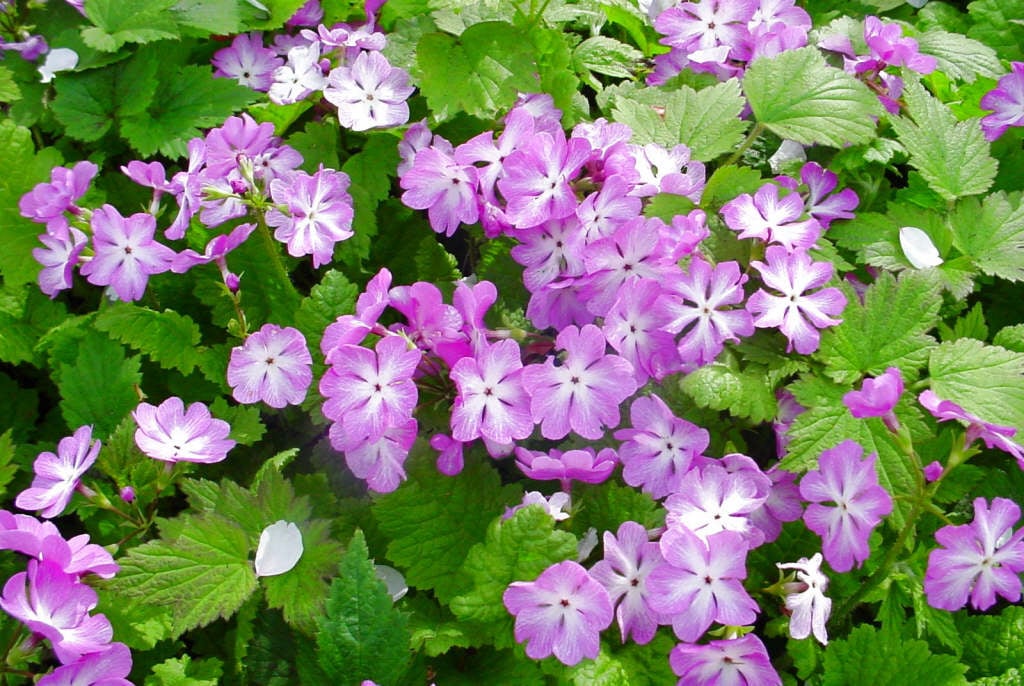Primula sieboldii (Co)
Siebold primrose
A perennial to 30cm, with rosettes of broadly oblong to ovate, pale green, softly downy leaves and erect stems bearing umbels of purple to crimson, pink or white flowers 2.5-4cm wide in late spring and early summer

Buy this plant
Size
Ultimate height
0.1–0.5 metresTime to ultimate height
1–2 yearsUltimate spread
0.1–0.5 metresGrowing conditions
Moisture
Moist but well–drainedpH
Acid, NeutralColour & scent
| Stem | Flower | Foliage | Fruit | |
| Spring | Pink Purple Red White | Green | ||
|---|---|---|---|---|
| Summer | Pink Purple Red White | Green | ||
| Autumn | Green | |||
| Winter |
Position
- Partial shade
Aspect
North–facing or West–facing or East–facing
Exposure
Sheltered Hardiness
H5Botanical details
- Family
- Primulaceae
- Native to GB / Ireland
- No
- Foliage
- Deciduous
- Habit
- Bushy
- Genus
Primula are herbaceous or semi-evergreen perennials, forming a basal rosette of simple leaves, with salver-shaped or bell-shaped flowers which may be solitary or carried in an umbel or in whorls on an erect stem
- Name status
Correct
- Horticultural Group
- Cortusoides section primulas are woodland perennials with long-stalked, rounded, lobed and hairy leaves, and usually rosy-pink flowers in a single umbel
- Plant range
- E Siberia to Japan
How to grow
Cultivation
Grow in partial shade, in deep humus-rich, moist, neutral to acid loam soil; tolerates full sun if the soil remains moist at all times. See primula cultivation for further advice
Propagation
Propagate by division as it comes into growth or propagate by seed
Suggested planting locations and garden types
- City and courtyard gardens
- Rock garden
- Cottage and informal garden
- Patio and container plants
- Flower borders and beds
- Garden edging
Pruning
Tidy plant after flowering and remove diseased or damaged leaves
Pests
May be susceptible to aphids, leafhoppers, vine weevil and slugs
Diseases
May be susceptible to a virus, grey moulds (botrytis) or primula brown core
Get involved
The Royal Horticultural Society is the UK’s leading gardening charity. We aim to enrich everyone’s life through plants, and make the UK a greener and more beautiful place.